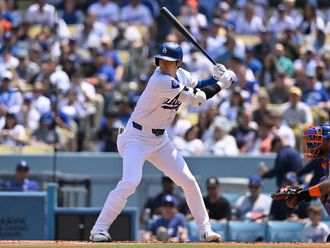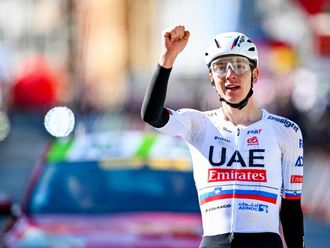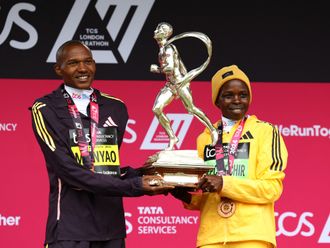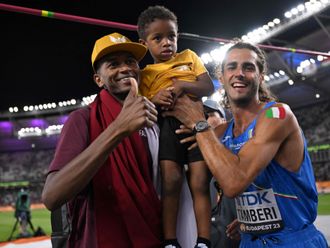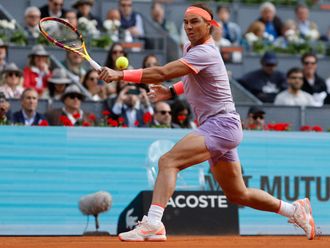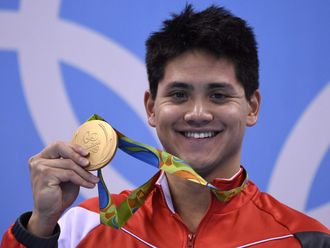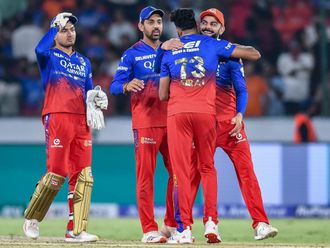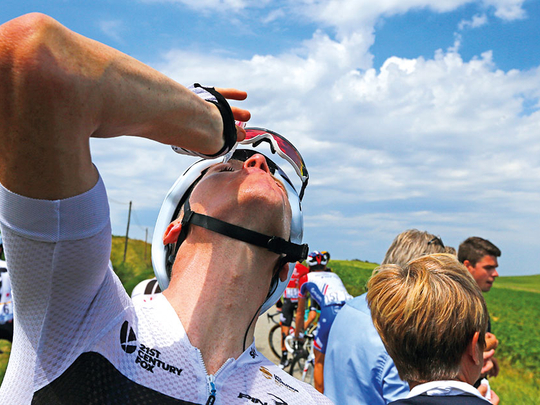
Bagneres-de-Luchon: France’s Julian Alaphilippe won his second stage of the Tour de France on Tuesday when he capitalised on a rival’s misfortune during a day of drama.
Britain’s Adam Yates had been leading by 14 seconds and six kilometres from the finish in Bagneres-de-Luchon when he slipped on a wet patch on the descent and the front wheel went from under him. Alaphilippe took over to cross the line clear of the rest of the breakaway riders and extend his lead in the King of the Mountains standings.
Gorka Izagirre took second place while Yates managed to recover after his crash and finished third.
There were no major changes in the General Classification standings as the peloton rolled home with at the yellow jersey contenders finishing safely.
Earlier, the stage had to be re-started after a brief halt when police used tear gas near the peloton to break up a protest by farmers.
Bales of hay blocked the road 26 kilometres into the day’s ride from Carcassone as farmers demonstrated against a cut in state aid.
Among the riders affected by the tear gas was Team Sky’s overall leader Geraint Thomas, who was pictured rubbing his nose following the incident, and his teammate Chris Froome.
Thomas holds a lead of one minute 39 seconds over Froome in the race for the yellow jersey.
Television images showed Tour de France medical officers handing out eye drops to riders including green jersey points leader Peter Sagan.
This year’s Tour de France has been marked by a series of incidents on the sidelines of the race including abuse directed at Team Sky and four-time champion Froome.
Amid a general feeling of suspicion surrounding Sky and their sheer domination of the race, Froome has been spat at and manhandled, Thomas has been booed off the podium and some of Sky’s staff have also faced abuse.
There was drama on the course as well for former world champion Philippe Gilbert, who got back on his bike to continue the stage despite a spectacular crash that sent him flying over a wall.
Gilbert, who rides for Quick Step, was 57.2km from the finish and in the lead of the race when disaster struck.
Negotiating a left-hand bend at speed, Gilbert failed to brake in time, skidded and was sent flying head first over a parapet and into a ditch.
The former Tour of Flanders and Liege-Bastogne-Liege winner was helped back up on to the road and given first aid before resuming the stage in the company of a group of front-runners. Although shaken, the 36-year-old looked to have suffered only bruises and scratches.
Medical services which are on hand throughout the race attended to Gilbert’s injuries as he rode alongside the doctor’s car.
Meanwhile, tour organisers are revamping some stages to liven up the action: Shorter mountain stages, intermediate bonus sprints, and a Formula One-like grid start.
“Spectators are becoming more and more demanding and they want to see real excitement,” says Luca Guercilena, general manager of the Trek-Segafredo team.
“Endurance is a big part of cycling. But if we’re able to mix the strain of longer stages with shorter legs that allow space for more attacks, a good mix could be the winner.”
While mountain stages in the Tour are traditionally more than 150 kilometres or longer — sometimes beyond 200km — this Tour features two legs that are relative sprints by comparison.
Stage 11 last week, a 108.5-km leg from Albertville to the La Rosiere ski resort, saw elite riders such as Alejandro Valverde attack from far out, forcing Team Sky to increase their pace far earlier than they would have liked.
Stage 17 on Wednesday from Bagneres-De Luchon to Saint-Lary-Soulan Col du Portet in the Pyrenees promises to be even more unpredictable at just 65km over three gruelling climbs, including an uphill finish.
“It’s not really been done before so it’s going to be tough. It’s basically up, down, up, down, up — 2 1/2 hours full gas racing,” said Thomas. “I’m sure it will be good to watch, maybe not to race.”
On longer mountain stages, the top-placed riders usually wait until the final climb to swing into action, saving precious energy in the preceding hours for what they hope will be a decisive attack with the finish line approaching.
“What eventually you want to see is that the race goes on and that the best case scenario is that the big boys make the clash between each other. ... It is the future of cycling, I think,” says Tom Steels, the Quick-Step team sports director and a former rider who won nine Tour stages over his career. “In stage races, the shorter they are, the better it is.”
— Agencies



